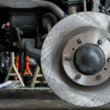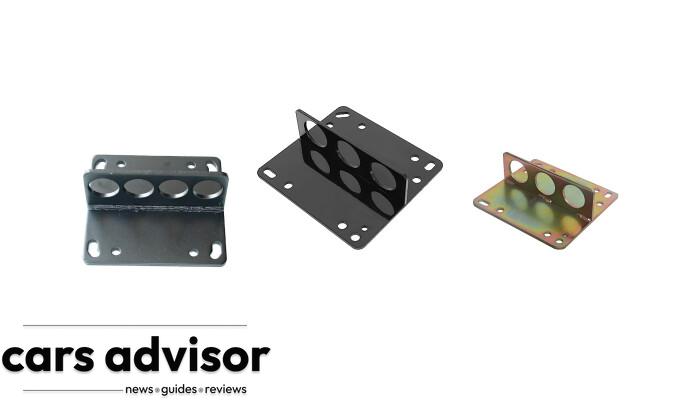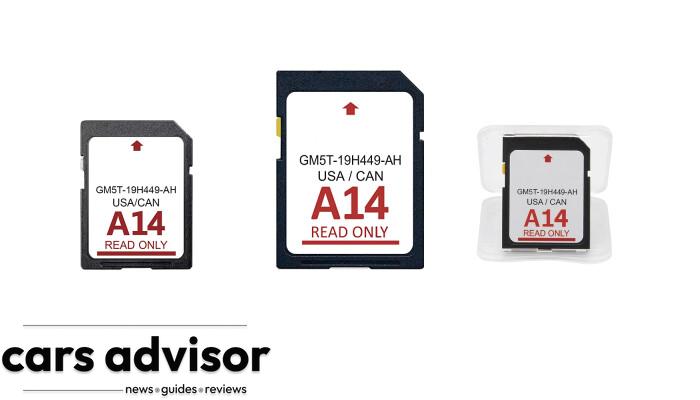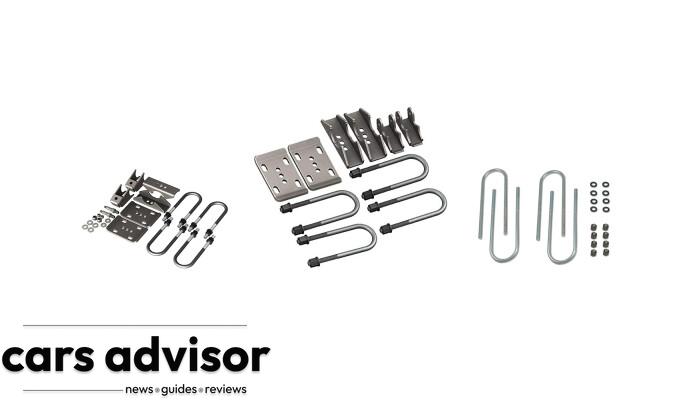Dealing with a dead car battery can be frustrating, especially when you can’t access a charger. But did you know there are alternative methods that will help bring your battery back to life?
In this blog, we’ll explore various ways to Charge A Car Battery Without A Charger, such as jump-starting your vehicle or harnessing the power of solar energy.
So whether you’re in an emergency situation or looking for eco-friendly charging options, keep reading to learn how these innovative methods can save the day and get you back on the road in no time!
Methods To Charge A Car Battery Without A Charger
There are several ways to charge a car battery without a charger, including jump-starting with another vehicle, solar charging, a power bank or UPS inverter, push-starting the car and alternative methods like wind turbines or water turbines.
Jump Starting With Another Vehicle
Jump starting with another vehicle is a common method for charging a car battery without a charger. This technique involves connecting the dead battery to a fully charged battery in another vehicle using jumper cables.
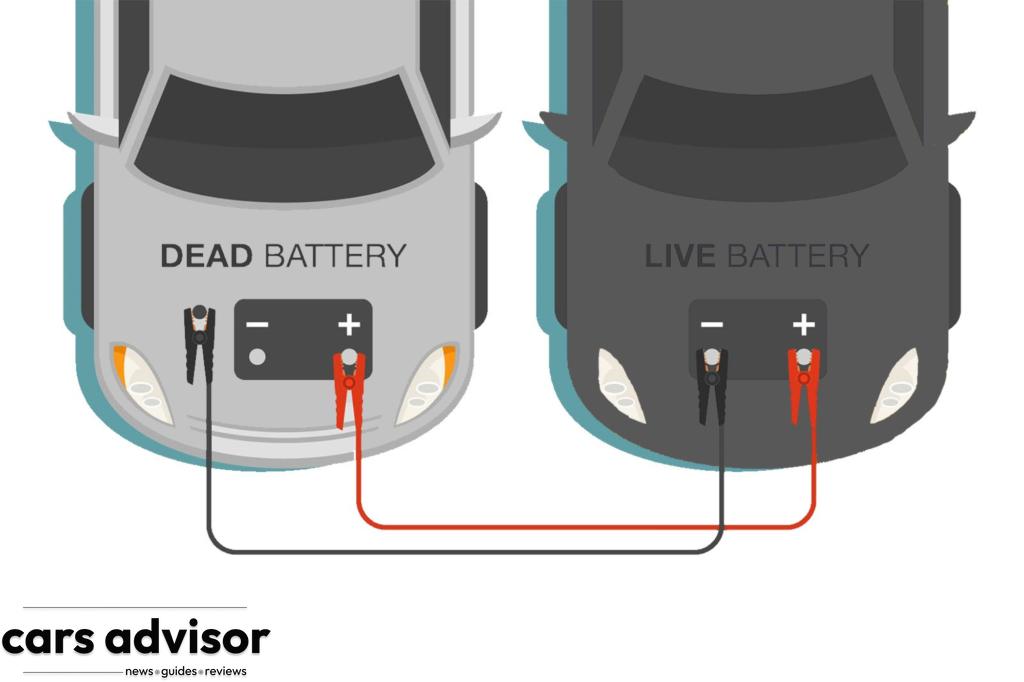
To do this safely and effectively, follow these steps:
- Ensure both vehicles are turned off and parked close enough for the jumper cables to reach each battery.
- Open the hoods of both cars and locate their batteries.
- Connect one end of the positive (red) cable to the positive terminal (+) on the dead battery.
- Connect the other end of the positive cable to the positive terminal on the donor vehicle’s battery.
- Attach one end of the negative (black) cable to the negative terminal (-) on the donor vehicle’s battery.
- Connect the other end of the negative cable to an unpainted metal surface under the car’s hood with the dead battery, away from any moving parts or fuel systems.
- Start-up engine in donor vehicle and allow it to run for several minutes before starting up engine in the discharged vehicle
- Run both engines for about five minutes while connected, allowing alternator power from the donor car gradually charge the recipient car’s weak/dead battery
- Remove cables carefully in reverse order: first, disconnect the negative side, then proceed with the positive side
- After disconnecting, operate the engine/car receiving a charge for additional 20-30 minutes optimally until the voltage reaches desired levels
While convenient, jump starting can cause damage if done incorrectly, so familiarize yourself with the proper procedure beforehand to ensure a safe, efficient charging experience avoiding costly repairs later on down the road.
Solar Charging
Solar charging is a great option for those who want to charge their car battery without a charger. It involves using energy from the sun to recharge the battery, making it an eco-friendly method.
Using this method requires a solar panel and basic wiring knowledge. Simply connect the solar panel to your battery using alligator clips or similar connectors and let it do its job.
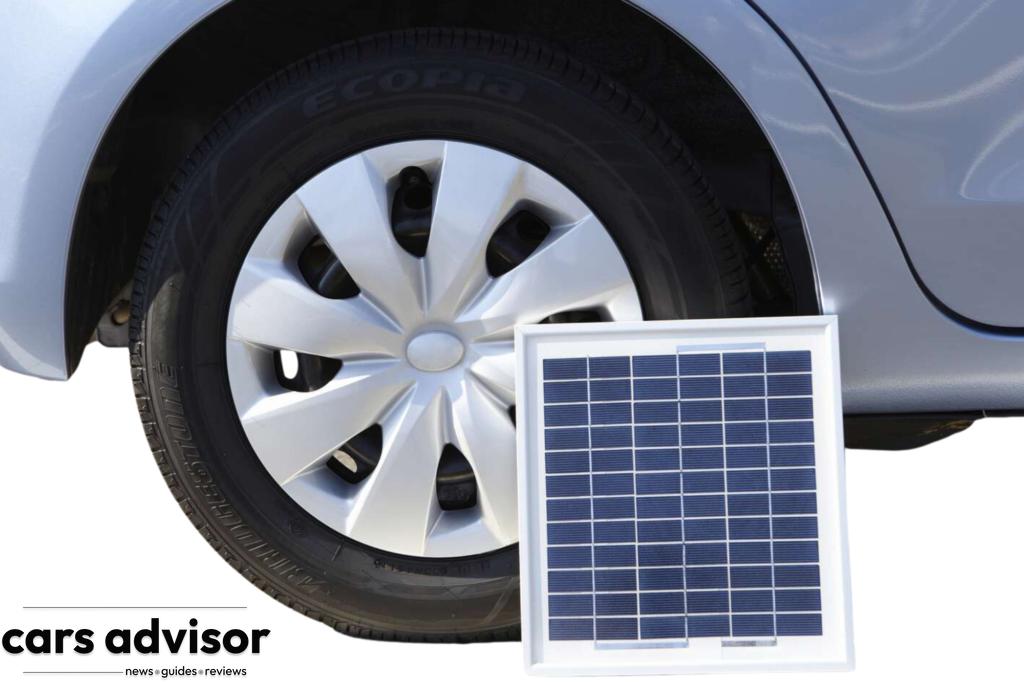
Remember that solar panels may not work as efficiently on cloudy days, so it’s best to use them in sunny weather.
Choosing the right solar panel size according to your car battery capacity; otherwise, you would be overcharging or under-charging, adversely affecting your battery life span.
You can purchase portable units charging dead car batteries via Amazon and other online retailers.
Another benefit of solar charging is that it’s portable and can be used anywhere with sunlight anytime – no electrical outlet is required!
Take safety precautions, such as wearing protective gear like goggles or gloves when handling electrical components during setup (as mentioned above).
This way, you can safely enjoy all the benefits of this alternative method of recharging your car’s batteries without electricity.
Using A Power Bank
A power bank is another alternative to charging a car battery without a charger. This option involves finding a power bank with an appropriate output voltage and connecting it to the car battery using clamps or clips.
It’s important to ensure that the power bank has enough capacity to fully charge the battery and monitor the progress of the charging process.
One advantage of this method is its portability – you can use it anywhere and anytime with access to a power bank.
Additionally, it’s relatively easy and cheap compared to other methods, such as purchasing solar panels. However, one thing to remember when using a power bank is the risk of overcharging, which can sometimes damage the battery and the power bank itself.
Overall, a power bank for charging your car battery without a charger can be effective if done properly and with caution.
Before starting any DIY charging project, ensure your chosen power bank provides sufficient capacity and output voltage compatibility with your car’s electrical system.
Push Starting A Car
Push starting a car is another method for charging a battery without a charger.
Here’s how to do it:
- Get the car to a flat surface and turn off all electrical accessories.
- Place the key in the ignition and shift the car into second gear (manual) or drive (automatic).
- Push the car to gain momentum, as you would when pushing a bicycle.
- Once there’s enough speed, release the clutch pedal quickly while simultaneously pressing down on the gas pedal.
- The engine should start running once you’ve got it up to around 5-10 mph.
- Once the engine fires up, drive for at least 20-30 minutes so the alternator can recharge the battery.
Remember, this method only works if your vehicle has a manual transmission or an automatic transmission with electronic controls that allow it to be shifted into neutral while being pushed.
Additionally, pushing a car can be dangerous if not done correctly, so use common sense when trying this method.
Alternative Charging Methods (such As Using A Wind Turbine Or Water Turbine)
In addition to the more common methods for charging a car battery without a charger, some alternative techniques are available.
One involves using wind or water turbines to generate electricity and charge the battery. While this may not be practical for everyday use, it can be useful during emergencies or camping trips.
To utilize this method, you’ll need access to a wind or water turbine set up to produce power. You can then connect your car battery directly to the generator using cables and clips.
Be sure to follow all safety precautions when working with electricity.
While this method may require more preparation and equipment than other alternatives, it can provide an eco-friendly and sustainable way of charging your car battery without relying on traditional power sources.
Safety Precautions To Follow When Charging A Car Battery
When charging a car battery without a charger, it’s crucial to wear protective gear, ensure proper ventilation, disconnect the battery before charging, and avoid sparks and flames.
Wear Protective Gear
When charging a car battery without a charger, it’s important to practice safety precautions such as wearing protective gear.
The process involves dealing with electricity and acid, which can be hazardous if improperly handled. Ensure that you wear gloves to protect your hands from coming into contact with the battery terminals or acid.
Additionally, wear goggles to prevent acid splashes from getting into your eyes.
Moreover, dressing appropriately for the task at hand is advisable by covering up any exposed skin areas as much as possible.
This protects you from corrosive substances that may come in contact with your skin during the charging process. Lastly, avoid wearing loose clothing or jewellery that could get caught on moving car parts while working.
By taking these simple measures, you can reduce the risk of injury and safely handle a car battery without a charger. Remember always to prioritize safety when handling anything electrical or chemical-based in nature.
Ensure Proper Ventilation
Ensuring proper ventilation is crucial when charging a car battery without a charger. Charging a battery can release flammable hydrogen gas and be dangerous if inhaled in large quantities.
It’s important to charge the battery in an open and well-ventilated area, away from any sources of flames or sparks.
If you’re charging the battery indoors, ensure the room has good air circulation and consider using a fan to help dissipate fumes. You might also want to wear protective gear like goggles and gloves when handling the battery.
By following these safety precautions, you’ll minimize risks associated with charging a car battery without a charger while keeping yourself safe from harm.
Always remember that safety should never be taken lightly – it’s better to err on caution when dealing with potentially hazardous materials such as batteries.
Disconnect The Battery Before Charging
Before charging the car battery, always disconnect it from the electrical system. This is important to avoid any possible electrical interference or damage during charging.
You can disconnect the battery by removing the negative (black) cable first and then the positive (red) one.
It’s also recommended to clean the battery terminals before charging, as corrosion buildup on them can affect their ability to transmit energy effectively.
Use a wire brush or sandpaper to remove any dirt, rust or debris from both posts before reconnecting them after charging.
In addition, when handling batteries, ensure proper ventilation in case of acid leaks and wear appropriate protective gear like gloves and safety glasses.
These precautions are vital for your safety while undertaking DIY car repairs and maintenance activities such as this one.
Avoid Sparks And Flames
Avoiding sparks and flames at all costs when charging a car battery without a charger is crucial. One small spark can ignite the hydrogen gas the battery generates, causing an explosion.
Creating a safe environment for charging the battery is important to prevent this. Find an open space with good ventilation and away from anything that could cause sparks or flames.
When handling the cables during connection, ensure they do not touch each other as they might produce sparks which could lead to explosions. You must also wear protective gear such as gloves and safety goggles in case of any accidents like splashes or spillages.
By taking these precautions, you can safely charge your car battery without a charger and avoid dangerous situations while completing the task – getting your vehicle back on the road again!
Keep The Battery Away From Children And Pets
Protecting the car battery from children and pets is an important safety measure. Car batteries contain highly corrosive and poisonous acid that can cause severe burns or harm if ingested.
Therefore, storing the battery in a safe place where children or pets cannot access it is essential.
Always keep the battery out of reach when charging, as even a slight spill can lead to serious injuries. Covering the terminals with tape or insulation material while not in use can also help prevent accidents.
It’s crucial to read and follow all instructions carefully before attempting any DIY charging method involving a car battery, especially if you have kids or pets.
Exercising caution when handling car batteries is critical for your safety, loved ones, and pets. Keep the battery away from children and animals; this simple practice could save someone’s life!
Tips For Maintaining A Healthy Car Battery
To maintain a healthy car battery, it is important to regularly perform maintenance tasks such as keeping the battery terminals clean, avoiding overcharging or undercharging the battery, storing the battery in a cool and dry place, and conducting partial state charges.
Regular Maintenance
Regular maintenance is essential to keeping your car battery healthy and extending lifespan. Simple steps like inspecting and cleaning the battery terminals can prevent corrosion, which can disrupt the flow of power to your vehicle’s electrical systems.
Similarly, checking the water level in a traditional flooded cell battery and topping it off with distilled water when necessary can keep the battery performing optimally.
It’s also important to avoid overcharging or undercharging your car battery, as this can damage it over time.
Most modern vehicles come equipped with alternators that regulate charging automatically. However, if you’re using alternative methods to charge your battery, monitor it closely and disconnect the charging source once it reaches a full state of charge.
Finally, storing your car battery properly when not in use is crucial for maintaining its health. Keep batteries away from extreme temperatures and moisture to avoid damage to internal components.
Store batteries on a cool, dry surface at room temperature whenever possible – never store them directly on concrete floors or other conductive surfaces that could drain their power slowly over time.
By following these simple maintenance tips, you’ll help ensure that your car’s electrical system stays charged and ready whenever you need it – whether you have access to a charger or not!
Keep Battery Terminals Clean
Keeping the terminals clean is essential to ensure your car battery stays healthy and lasts long. Over time, dirt and corrosion can accumulate around the terminals, reducing the battery’s efficiency.
To clean them properly, disconnect the battery first with protective gloves on. Then, use a wire brush or sandpaper to scrub off any rust or grime from the positive and negative terminal posts.
If there is severe corrosion buildup, you may need to mix baking soda with water in a small container until it forms a paste-like consistency.
Then apply this mixture onto the corroded areas using an old toothbrush, and let it sit for a few minutes before rinsing off with water.
After cleaning your battery, coat each terminal post with petroleum jelly or dielectric grease for added protection against corrosion.
Keeping your battery terminals clean helps extend their lifespan. It ensures that electricity flows freely between the alternator and starter motor without interruptions due to poor connections caused by dirt build-up on connectors in electrical systems.
Avoid Overcharging Or Undercharging The Battery
One of the biggest concerns when charging a car battery without a charger is overcharging or undercharging the battery.
Overcharging can damage the battery and cause it to leak, while undercharging can prevent it from starting in the first place.
To avoid these issues, it’s important to use a power supply that matches your specific battery’s voltage and amperage requirements.
To ensure proper charging, monitoring the process closely and stopping once the battery has reached full capacity is also important. Adding lights or using a multimeter can help you keep track of this.
Additionally, if using alternative charging methods like solar panels or wind turbines, ensure they function properly before connecting them to your car’s electrical system.
In short, avoiding overcharging or undercharging your car battery is crucial for its longevity and functionality. Take care when choosing a power supply, and monitor the process closely to ensure your battery gets just what it needs – no more, no less!
Store The Battery In A Cool, Dry Place
One important factor to consider in maintaining a healthy car battery is how you store it when it’s not in use. It’s best to keep the battery in a cool, dry place like a garage or storage shed.
Extreme temperatures can damage the battery and shorten its lifespan. Consider investing in a climate-controlled storage unit if you live in a very hot or cold area.
If you must store your car outside, cover the battery with an insulated blanket or box to protect it from harsh weather conditions.
Keeping the battery dry is also crucial since moisture can lead to corrosion of the terminals and other components.
Regularly inspecting and cleaning the terminals will prevent corrosion buildup and ensure proper electrical connections between the battery and other car parts.
By providing a safe environment for your car battery when not in use, you can extend its life and avoid costly repairs.
Conclusion
Charging a car battery without a charger is possible through various methods like jump-starting, solar charging, or a power bank.
However, safety precautions like wearing protective gear and disconnecting the battery before charging are necessary.
Maintaining your car battery regularly is important by keeping its terminals clean and avoiding overcharging or undercharging it.
With these tips, you can keep your car running smoothly and avoid any unexpected dead batteries on the road. So go ahead and try out some of these alternative charging methods for an emergency!
FAQs
Here are some frequently asked questions about charging a car battery without a charger:
1. Can I use a power bank to charge my car battery?
– Yes! But ensuring the power bank has enough output power to charge the battery is important.
2. Can I use a phone or laptop charger to charge my car battery?
– Yes, but only as a temporary solution. These chargers have low output power and can damage the battery if used for an extended period.
3. How long does charging a car battery without a charger take?
– The time it takes depends on the method used and the battery’s condition. It can take anywhere from a few hours to several days.
4. Is it safe to jump-start my car using another vehicle?
– Yes, but proper safety precautions must be taken, such as connecting the cables correctly and ensuring both cars are turned off before starting the process.
5. Can I use alternative energy sources like wind or water turbines to charge my car battery?
– It’s possible, but these methods require specialized equipment and may not be practical for most people.






